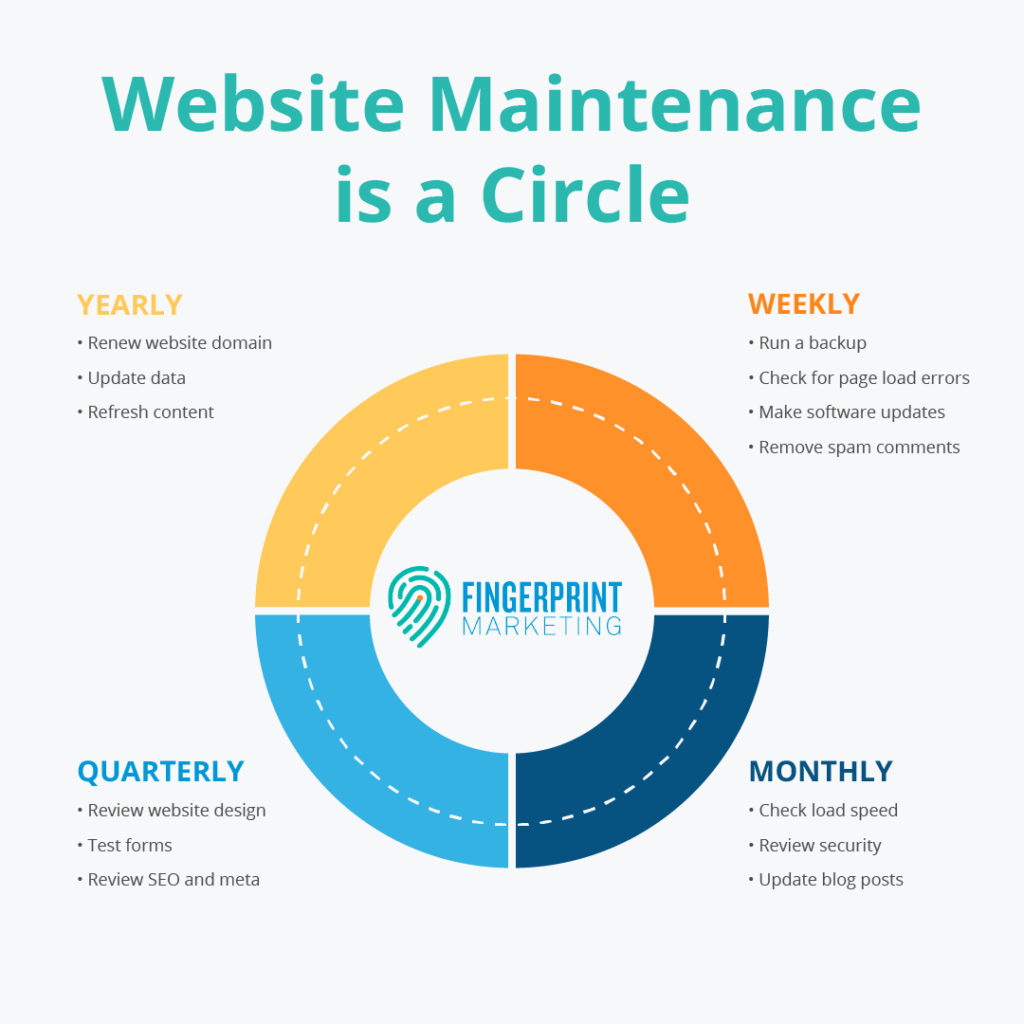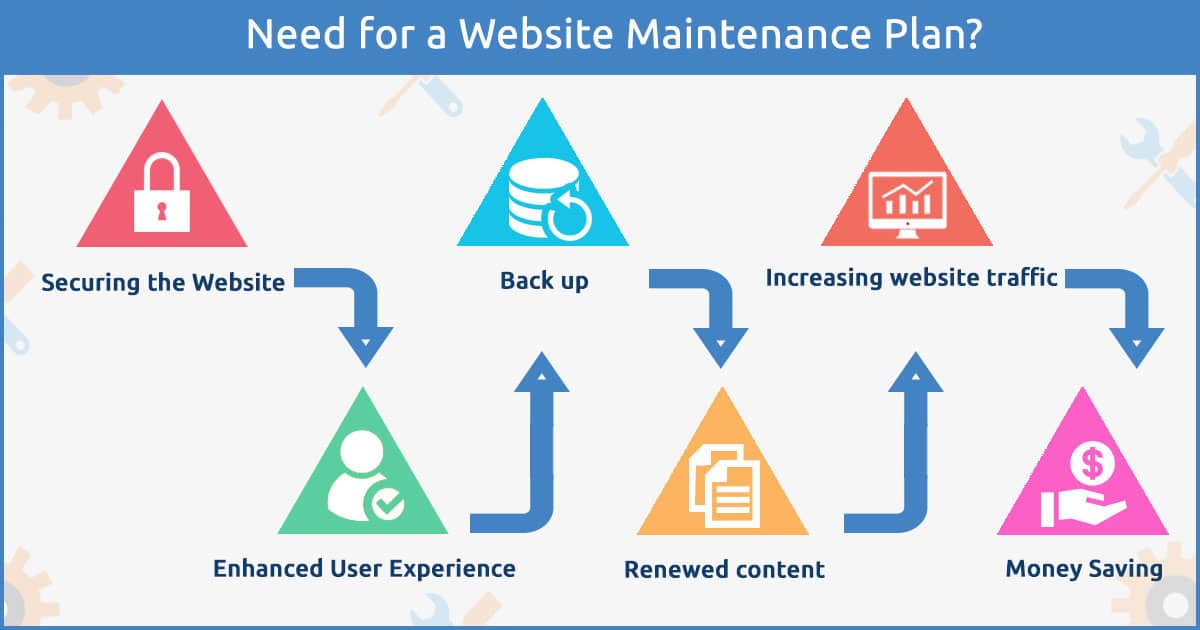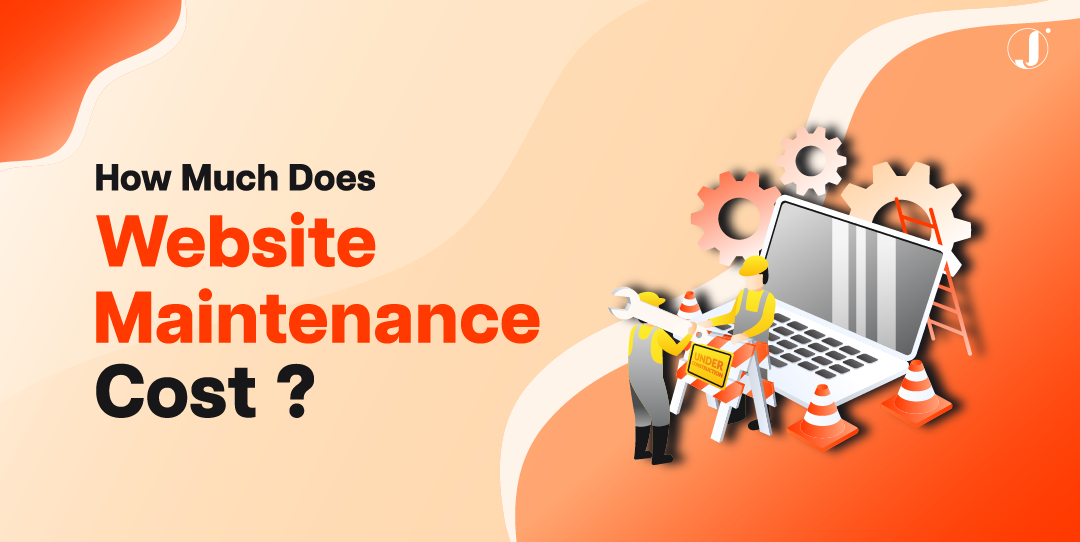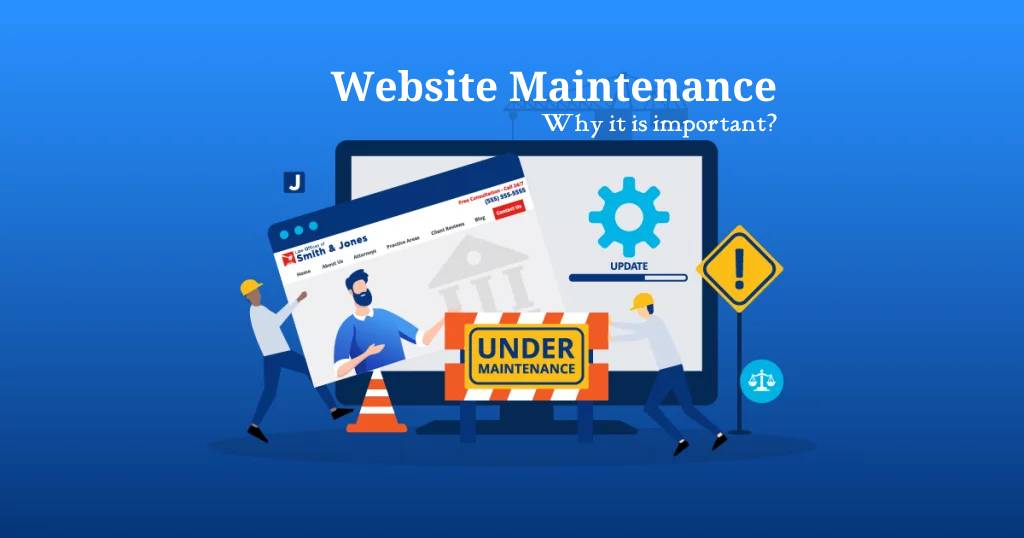
A website is a little like an organism; it changes, gets damaged, becomes slow, reacts, and sometimes it even crashes out of the blue without any kind of warning. This online space for a business is however more than just a digital billboard; it is the new storefront, sales counter, support desk, and brand personality all at the same time. Many brands rely on website maintenance services early on to establish this foundation.
When a person searches for a product, service, or company online, their search usually ends at a website. What they find in those first couple of seconds determines how they will perceive the whole brand. A neat, speedy, and functional site is one that makes people trust the brand; the slow, obsolete site, on the other hand, discredits the brand.
The internet is not a place for people to have patience and if your website is loading even slightly slow, or if it has a glitch, no matter how small, then the vast majority of users will decide to go to your competitors without even thinking twice. So, in that sense, maintenance is more than just a technical task, it is a core business activity. The goal is quite straightforward: to keep the website in good shape, safe, and to have it working in a way that will encourage the visitors to become customers, something often strengthened by website maintenance services.
This handbook will explain and simplify all the knowledge required by a beginner to keep a website updated and this includes understanding what is, cost of, tasks involved, benefits, and its long-term influence on business growth. Knowing the fundamentals of website maintenance will keep you away from problems that take time, money, and which cause the trust of your visitors to decrease whether it is your personal blog, a platform for your corporation, or an e-commerce store.
Table of Contents
ToggleWebsite Maintenance

Website maintenance is a series of activities that are done continuously to keep your site updated, secured, and user-friendly. It is not a single job only, it is a whole procedure that guarantees the existence of your digital front is still alive and reliable.
In other words, maintaining a website is executing different tasks, for example:
- Broken link checking
- Plugin updates
- Testing forms
- Security scanning
- Image optimization
- Checking performance metrics
- Refreshing outdated content
This everyday maintenance is similar to caring for your car. Even a brand new car needs its oil changed, brakes and tires checked to keep it running smoothly. A website is similar in nature – it will slow down if you don’t take care of it, security risks will increase, there will be more obsolete content, and finally, it will have some issues that your visitors will be able to spot very easily.
Basically, maintaining a website should be taken as a must rather than an option. It is a necessary practice to sustain the online presence of a business as reliable and effective.
Why is a website maintenance plan important?

Website servicing is a bit like a health routine: it prevents problems from arising in the first place, solves any at an early stage, and keeps the customer journey smooth. Here’s why that matters so much.
- Customers research before buying anything.
Today’s buyers never make decisions in the dark. They compare, browse for reviews, read through product details, and check brand authenticity-all online. If the website shows poor loading or if the information is outdated, customers will immediately lose confidence.
A well-maintained website conveys clarity and care-two of the qualities people look for when choosing whom to trust.
- First impressions depend on your website’s quality
Your website is most often the first meeting point of contact between you and a prospect, and if it has clunky navigation or looks like the design has been ignored, visitors will form a negative impression well before they read a single word of your content.
A polished website means professionalism; it is indicative that your company takes itself seriously.
- Your website directly impacts your sales.
Whether lead generation or e-commerce, the journey from visitor to customer goes through your website, and when a checkout button fails or a form doesn’t submit, you lose sales without even realizing it.
Even minor interruptions-something as minute as a malfunctioning popup or an issue with the mobile layout-can seriously lower conversions. Regular maintenance means each step of the funnel functions exactly the way it should.
- The user experience can make or break your brand.
The users coming to your website expect a smooth browse, fast loading, mobile-friendly layout, and clean navigation. This means that if they encounter errors or slow pages, they click away in an instant.
Good maintenance keeps experiences seamless, so visitors stay longer, explore more, and eventually convert more often.
- Security vulnerabilities can harm your business
Cyberattacks have just become a part of everyday reality across industries. The hackers tend to target outdated websites, as those are easy to break into. A website with old plugins, weak passwords, or expired SSL certificates is a vulnerability waiting to be exploited.
Maintenance: prevents attacks by ensuring everything is up to date and patched. Protection of customer data, preservation of brand trust, avoidance of expensive recovery costs.
- Better maintenance leads to better SEO performance.
Search engines love fast, secure, quality-filled websites. If your website is slow, broken, or not updated, the rankings fall. With falling rankings, you get less organic traffic, hence fewer chances of growing.
Ongoing maintenance will allow a website to remain competitive within search rankings, thus giving it an edge in visibility on the web.
How much does website maintenance cost?

The cost for maintaining a website will vary depending on its size, complexity, and purpose.
Personal websites
These are normally simple and low in traffic. Maintenance is anywhere from $5 to $25 per month.
Small business websites
They require a regular update of the content, a check for security issues, and minor bug fixing, which might cost as much as $100 a month.
Corporate websites
With large platforms, you can develop advanced features, integrations, and even frequent updates. The costs of maintenance will range from $200 to $3500 per month.
E-commerce websites
As they handle transactions, inventory, data of users, and multiple real-time interactions, they need the most maintenance. The maintenance would fall in the range of $1500 to $2500.
These figures change with respect to hosting, security requirements, design complexity, and availability of in-house teams.
Extra website maintenance costs
Some factors are essentially necessary to be budgeted separately, the knowledge of which helps in planning.
1. Domain Renewal
Think of your domain name as the address to your website; it is supposed to be renewed annually or semi-annually so that you retain ownership of it. Loss of a domain may also lead to loss in brand identity online.
Most domain prices range from $2 to $20 per year.
2. SSL certificate
An SSL certificate helps to keep sensitive information safe and creates a safe browsing experience. It will switch your website from “HTTP” to “HTTPS” and will also show the padlock symbol in the address bar, a signal of trust.
The prices can vary greatly depending on the level of encryption desired. While some hosts include SSL for free, others charge anywhere from $10 to $1,500 annually.
3. The cost of hosting
Your hosting server will determine your speed, uptime, and reliability. You can choose among:
- Shared hosting: Multiple websites share a server; affordable and suitable for small sites.
- Virtual Private Servers: A server divided into virtual environments, giving more control and resources.
- Dedicated servers: Each of the options has a different price, which usually ranges from $60 to $24,000 yearly, depending on traffic, storage, and performance.
- Website Builders (like Wix or WordPress): Easy-to-use platforms with hosting included.
What does maintaining a website include?
Every website is different, but some tasks that are generally the most important include:
Annual full-site testing
That means checking every page, every form, every link, every image, every feature. Checking Browser Compatibility Your website should work properly in Chrome, Firefox, Safari, and every other browser that is widely used.
Quarterly form and checkout testing:
This is quite important for e-commerce stores in order not to lose sales.
Monthly software updates:
This means hosting, plugins, CMS updates, and third-party tools have to be updated regularly to avoid any security issues.
Regular back-ups:
Backups create recovery points, which are very important in case of system failures or when the system has been compromised during a cyber attack.
Weekly performance reviews:
Analytics tools may be used to provide insight into patterns in traffic, user behavior, bounce rates, and conversion flows.
Professional Website Maintenance Services have some structured routines that range from technical to strategic.
Frequently Asked Questions
What is website maintenance?
It involves the work needed to keep your website functioning properly, secure, up-to-date, and easy to use.
Why is maintenance important?
It prevents problems, cements user experience, defends against cyber-attacks, and strengthens search rankings.
How much does maintenance cost?
It also depends on the type of website, features, and security requirements.
What does maintenance include?
Updates, backups, testing, security checks, content review, and overall performance optimization.
What other expenses might I incur?
Domain renewal, SSL certificates, and hosting fees.
Why maintenance is essential for business growth over time
Your website is not a one-off project, it works more like a living ecosystem. With the growth of your business, your website has to change with it. Fresh pages, current content, easier navigation, better graphics, and more robust security standards all call for uninterrupted moves.
If maintenance is disregarded, problems start to appear silently behind the scenes. These problems which are not seen can, in a way, gradually weaken your online presence and result in lower conversions. The most common signs of poor maintenance are:
- Users being annoyed with slow-loading pages
- Users losing trust because of outdated design elements
- Backlinks that do not work and hence SEO is affected
- SSL certificates that have expired and thus credibility is lost
- Visitors being driven away because of poor mobile responsiveness
By maintaining proper upkeep, businesses can go on to build strong digital reputations which in turn help them to attract the right kind of traffic and experience fewer disruptions. Just like a well-maintained website is an efficient employee—undisrupted, it is consistent, and it is always your brand’s best representation.
Working with a team of experts who offer Website Maintenance Services will be your assurance that nothing will be left behind. When there is appropriate management, the site of your business remains in good shape, it is productive and it is in harmony with your business objectives as you are growing.
Investing in the maintenance of your web presence is, in fact, a wise decision that will pay off in the long run in terms of stability, visibility, and customer satisfaction, especially when your digital footprint keeps growing.








Rahul M.
B2B Service Provider